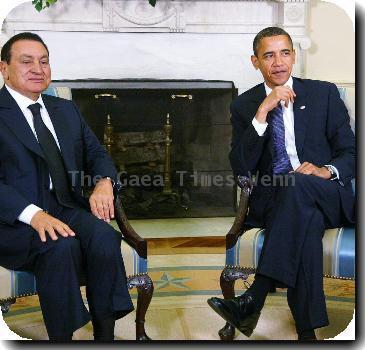Obama sends multi-trillion-dollar spending plan to Congress with record $1.56T deficit in 2010
By Martin Crutsinger, APMonday, February 1, 2010
Obama unveils 2011 budget with $3.83T in spending
WASHINGTON — President Barack Obama unveiled a multitrillion-dollar spending plan Monday, pledging an intensified effort to combat high unemployment and asking Congress to quickly approve new job-creation efforts that would boost the deficit to a record-breaking $1.56 trillion.
Obama’s new budget blueprint preaches the need to make tough choices to restrain run-away deficits, but not before attacking what the administration sees as the more immediate challenge of lifting the country out of a deep recession that has cost 7.2 million jobs over the past two years.
The result is a budget plan that would give the country trillion-dollar-plus deficits for three consecutive years. Obama’s new budget projects a spending increase of 5.7 percent for the current budget year and forecasts that spending would rise another 3 percent in 2011 to $3.83 trillion.
“Until America is back at work, my administration will not rest and this recovery will not be finished,” Obama declared in his budget message.
Addressing the fact that his budget first projects big increases in the deficit before starting to lower these imbalances, Obama told reporters, “It’s very important to understand, we won’t be able to bring down this deficit overnight given that the recovery is still taking hold and families across the country still need help.”
Obama’s budget offers tax cuts for businesses, including a $5,000 tax credit for hiring new workers this year, help for the unemployed and $25 billion more for cash-strapped state governments. All the temporary measures would boost the deficit over the next two years by $245 billion.
The deficit for this year would surge to a record-breaking $1.56 trillion, topping last year’s then-unprecedented $1.41 trillion gap, a number which had dwarfed the previous record of $454.8 billion set in 2008 under former President George W. Bush.
The administration is forecasting that deficits over the next decade will add an additional $8.5 trillion to the national debt, even if Congress adopts the administration’s package of proposals to trim future deficits starting in 2011. Those include a three-year freeze on spending for government programs, an effort which does not touch popular benefit programs such as Social Security and Medicare and which also exempts defense and homeland security. It also proposes a boost in taxes on the wealthiest Americans, families making more than $250,000 annually, by allowing the Bush tax cuts of 2001 and 2003 to expire.
Republicans were not impressed with Obama’s deficit cutting, saying that it fell far short of the bold steps needed in light of the fiscal challenges the country is facing.
“This country is sinking into a fiscal quagmire,” said Sen. Judd Gregg, the top Republican on the Senate Budget Committee. “These circumstances call for a bold, game-changing budget that will turn things around.”
The administration argued that Obama inherited a deficit that was already topping $1 trillion when he took office and, given the severity of the downturn, the president had to spend billions stabilizing the financial system and jump-starting economic growth.
Obama’s new budget carries forward the pledge he made in his State of the Union address: To put full attention on reviving the moribund U.S. economy, an effort to convince recession-battered voters that Democrats are in tune with the issues that affect their lives.
Obama’s new budget assumes enactment of a comprehensive health care program, the issue that dominated the president’s first year in office. Passage of that proposal is currently stalled with Democrats trying to figure out how to cope with the loss of a key Democratic seat that gave them the 60 votes they needed to overcome a Republican filibuster.
Obama’s job proposals would push government spending in 2010 to $3.72 trillion and increase that amount to $3.83 trillion in the 2011 budget year, which begins on Oct. 1.
The deficit in 2011 would total $1.27 trillion, the third straight trillion-dollar-plus imbalance. The deficit would fall to $828 billion in 2012 but would remain at levels surpassing any previous deficits through 2020.
The deficit for this year would be 10.6 percent of the total economy, a figure unmatched since the country was emerging from World War II. The administration does not trim the deficit below 3.6 percent of GDP for any year in the next decade, failing to meet its goal of lowering the deficit to 3 percent of GDP by 2015.
White House Budget Director Peter Orszag said the administration will rely on a deficit commission which the president will create by executive order to recommend ways to further reduce the deficit plus cope with deficits projected to soar further in the next decade with the retirement of millions of baby boomers.
Much of the spending surge starting in 2008 reflects the cost of massive economic stimulus measures passed by Congress to deal with the worst economic downturn since the Great Depression. The surge in the deficits reflects not only the increased spending but also a big drop in tax revenues, reflecting the 7.2 million people who have lost jobs since the recession began and weaker corporate tax receipts.
Obama’s new budget attempts to navigate between the opposing goals of pulling the country out of a deep recession and getting control of runaway deficits. The administration insists that once the recession is history, the government will turn its attention to attacking the deficits.
On the anti-recession front, Obama’s new budget proposed extending the popular Making Work Pay middle-class tax breaks of $400 per individual and $800 per couple through 2011. They were due to expire after this year. The budget also proposes making $250 payments to Social Security recipients to bolster their finances in a year when they are not receiving the normal cost-of-living boost to their benefit checks because of low inflation. Obama will also seek a $25 billion increase in payments to help recession-battered states.
In a bow to worries over the soaring deficits, the administration proposed a three-year freeze on spending beginning in 2011 for many domestic government agencies. It would save $250 billion over the next decade by following the spending freeze with caps that would keep increases after 2013 from rising faster than inflation.
Military, veterans, homeland security and big benefit programs such as Social Security and Medicare would not feel the pinch. Federal support for elementary and high school education would get what the administration termed the biggest increase in history. The Pell Grant college tuition program which would see an increase of $17 billion to just under $35 billion, helping an additional 1 million students.
The budget reveals some of the changes the administration is seeking in an overhaul of the No Child Left Behind school accountability law. The administration wants to change how schools are judged to be succeeding or failing, looking not only at a single year’s test score but at how kids and schools are progressing over time.
In Obama’s new budget, there would be substantial increases for homeland security and veterans programs — exempt from Obama’s partial freeze — with a 3.4 percent increase in the Pentagon’s core budget to $549 billion for next year.
The administration would kill $175 billion worth of Environmental Protection Agency clean water accounts used as a pork-barrel kitty by Congress.
Obama also kills his predecessor’s signature space program to return astronauts to the moon. NASA had already spent $9.1 billion on the program, which was projected to cost $100 billion by 2020. Obama’s new budget said NASA will be “launching a bold new effort” with an extra $1.2 billion annually for five years, money expected to be used to encourage private companies to build, launch and operate their own spacecraft for the benefit of NASA and others. NASA would pay the private companies to carry U.S. astronauts.
The new Obama budget will also include a proposal to levy a fee on the country’s biggest banks to raise an estimated $90 billion to recover losses from the government’s $700 billion financial rescue fund.
AP writers Andrew Taylor, Stephen Ohlemacher, Seth Borenstein, Darlene Superville and Libby Quaid contributed to this report.
Tags: 2011 budget, Barack Obama, Geography, Government Pensions And Social Security, Government Programs, Government-funded Health Insurance, Levels Of Education, National Security, North America, Obama budget, Personnel, Recessions And Depressions, United States, Us-budget, Washington



